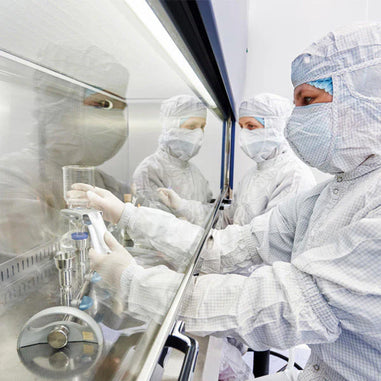- No products in the cart.
The solar panel manufacturing industry has seen tremendous growth in the past decade. As the world races to address a dwindling fossil fuel supply, public interest in solar energy will likely continue to grow. Solar is a large part of the future of green energy, but solar panel production doesn’t come without environmental hazards. Although the energy produced by solar panels itself is entirely green, their production, transportation, and installation relies on fossil fuels and produces waste. Solar panel production waste should be regulated at every step to minimize both environmental and economic concerns – making manufacturing better for the environment and your wallet.
The solar industry has already established themselves as warriors against carbon emissions, pollution, and climate change. Assessing waste generated during solar panel production can make strides towards decreasing the environmental impact even further. Here, we outline 4 techniques that can help you minimize solar panel production waste starting in the lab.
Assess and report your emissions
Emissions are generated at every stage in the manufacturing process. As a player in an industry dedicated to green energy, it is important to document and report the emissions involved in solar panel production of your facility. Periodically report your greenhouse gas, perfluorocarbon, and other relevant emissions to a third -party such as the Silicon Valley Toxics Coalition (SVTC). While this may seem daunting, it will help you establish your company as a dedicated, responsible, and transparent member in the field, while also holding others accountable. To present your company as a leader in this industry, do your best to reduce emissions associated with production.
In the lab, reduce the usage of equipment or machinery that consumes large amounts of energy by optimizing your operations. This can consist of facility design, standardization of operations, and purchase of high-efficiency equipment. Likewise, use renewable energy to power your facility whenever possible to keep your environmental footprint small. Remember that emissions translate to company expenses to power your production. Being mindful of how energy is used in your company will save you money while also benefiting the environment.

Reduce toxic waste generation
In addition to carbon emissions, solar panel production also generates waste that is toxic to the environment. Polysilicon is an important polymer used in solar panel production. However, creating this polymer generates the toxic byproduct silicon tetrachloride. Silicon tetrachloride should be dealt with appropriately for the safety of your workers and the environment. Luckily, this byproduct is can be recycled to create more usable silicon products. Be sure your supplier is knowledgeable and accountable in how their polysilicon is produced.
Aside from silicon byproducts, apply green chemistry techniques to all reactions to reduce the impact of all chemical waste and be sure to dispose of it appropriately when unavoidable. Likewise, usage of water resources should be kept to the minimum. Report water usage, wastewater generation, and water quality periodically, and dispose of any contaminated wastewater appropriately.
Design your manufacturing process with the environment in mind
It’s always a good idea to re-assess the design of lab or manufacturing facilities. Your facility should be designed in a way to reduce waste and conserve energy (not strictly electricity, but also that of your employees, storage, and equipment). At the design stage, set yourself up for sustainability by encouraging recycling materials that can be useful when reused. This can include: chemicals, equipment, water, glassware, and more. By establishing recycling capabilities, you are minimizing waste while saving yourself money on raw materials.
In addition to facility design, you should also plan out your supply chain to reflect an enforceable commitment to the environment. This means that not only do all players of your supply chain (chemical suppliers, raw material suppliers, machinery suppliers, etc.) exemplify a commitment to green energy, but are also transparent. For more information on how to optimize your design and eliminate waste in manufacturing, find local training programs for ‘Design for the Environment’ (DfE) and/or Lean manufacturing, as applicable to your facility.
Use high quality products to reduce waste and increase cost efficiency
There will be processes in which the usage or production of non-renewable resources is unavoidable. Assess these processes to reduce the generation of waste. This can be achieved by optimizing your workspaces with waste reduction in mind. Maintain tweezers, tools and reagents in an organized and accessible way. A simple way to start is with the use of well-labeled storage containers to make tasks easier and less wasteful. Likewise, leftover raw materials can be stored in a clean, appropriate location where they can be reused whenever possible. This can cut waste dramatically when materials such as spare wiring, reagents, or glass can be used for another application later on, rather than discarded.
Your company already plays an integral role in the worldwide pursuit of green energy by producing solar panels. By reducing solar panel production waste, you take steps to bring the world closer to that goal. Always work with a reliable supplier that can provide the technical expertise to accompany chemicals and lab safety supplies for your solar panel production needs.
__
For over 40 years, Lab Pro has been committed to delivering a complete laboratory solution to solar panel production laboratories worldwide. Come visit the biggest Lab Supply showroom in the Bay Area, or contact us online or at 888-452-2776.



















































